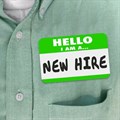More and more South African companies are realising the need to invest in deskless or frontline workers. This is especially true of the retail sector which relies a great deal on frontline staff for enhanced customer experience - a key factor in growing and maintaining bricks and mortar sales.
However, without access to the appropriate digital tools, frontline workers risk feeling disconnected. Additionally, they’ll lack the ability to complete every day or timely human resources (HR) tasks, especially those limited to web applications. Employees increasingly expect to be able to communicate digitally during breaks and on the go, as well as viewing payslips or checking their schedule.
For companies to succeed in a digital marketplace, they must provide a competitive digital employee experience. If deskless workers only have access to second-rate technologies or manual processes, businesses risk increased employee attrition and declining productivity.
The Deloitte Consumer Sentiment in Retail Insights South Africa report lists several interventions for retailers to employ as they seek to improve employee experience. These include creating a consistent employee experience across all stores, designing new ways of working, and introducing concepts such as gamification as a key driver of customer experience.
According to a January 2023 Statistics South Africa report, there are approximately 23 million smartphone users in South Africa (more than half of the adult population and a significant number of employed workers), making mobile apps a key way in which positive employee experiences can be achieved.
What are the different types of mobile apps?
Employees increasingly expect the same user experience from their work devices as their personal ones. That’s why it’s critical that businesses understand the different types of apps that are available on mobile devices.
Native apps: These are mobile apps designed for a specific smart device. They’re developed for either Apple iOS or Android and written in the corresponding programming language. As a result, they’re generally fast and reliable, in addition to making full use of a device’s features.
Web apps: These are websites that have been optimised for mobile browsers. That means they are only accessible through a smart device’s browser app. While this reduces development costs, they lack bespoke features, interface options, and a consumer-grade look and feel.
Hybrid apps: These combine elements of native apps and web apps. Like a native app, hybrid apps are downloaded from a device’s app store and can access phone hardware. However, they are essentially web pages accessed within a mobile-app view. Though they are faster to develop than native apps, they carry similar limits to web apps.
How to create a strong mobile user experience
A 2021 survey of 1,500 workers found that 62% agreed mobile devices played a key role in helping them be productive. A high-quality mobile user experience can be all that separates a good business from a great one. Your mobile apps should enable manager-employee communication, monitor pay and benefits, and provide survey responses.
Meet essential workers where they work
To truly meet employees where they work, you have to consider which of their tasks are most essential. If deskless employees have to schedule an in-person meeting for basic HR requests, you reduce their efficiency. Instead, enable them to perform the following actions directly from their mobile device:
- Take paid time off
- Access past and present payslips
- Monitor benefits and health care
- Carry out employee surveys
- Complete learning courses
- Onboard to a new job
- Stay informed via company communications
- Access policy information and connect with HR
Additionally, you should consider the needs of your frontline managers. While people leaders often have a desk, their working days will be dynamic due to the teams that they oversee. To better support managers, you should enable them to complete the following actions in your mobile app:
- Conduct HR reviews
- Manage time and scheduling
- Track employees paid sick leave
- Monitor essential HR approvals
- Prioritise user-friendly interfaces
Consumer mobile apps, whether for grocery stores or independent financial services, can be useful reference points. Carry out research on consumer-facing mobile applications, either through the Apple App Store or the Google Play Store. By replicating the experiences your employees are used to on their personal devices, you enable them to use your app instantly.
Usability will also be impacted by the quality of your app’s build, so make sure you carry out extensive QA testing. It’s worth noting that apps developed for a specific mobile operating system may encounter bugs when ported to other devices. If a mobile app doesn’t function properly or is slow to load, it can result in decreased engagement.
A positive user experience results in positive employees
Our global study of 3,000 frontline workers found that employee experience was a deciding factor in frontline worker retention. Despite 20% of frontline workers planning to leave their jobs within the next three to six months, 79% of workers who feel a sense of belonging at work have no plans to leave. A major part of that is enabling them with technology.
Frontline workers across the world are asking more from their employers. They want access to HR services, to feel a sense of belonging, and to be supported by their managers. Our results showed that frontline staff are 1,900% more likely to say their employer is not open and transparent if they don’t have access to the right technologies to carry out their work. Those companies who step up and take action will reap the benefits.




































